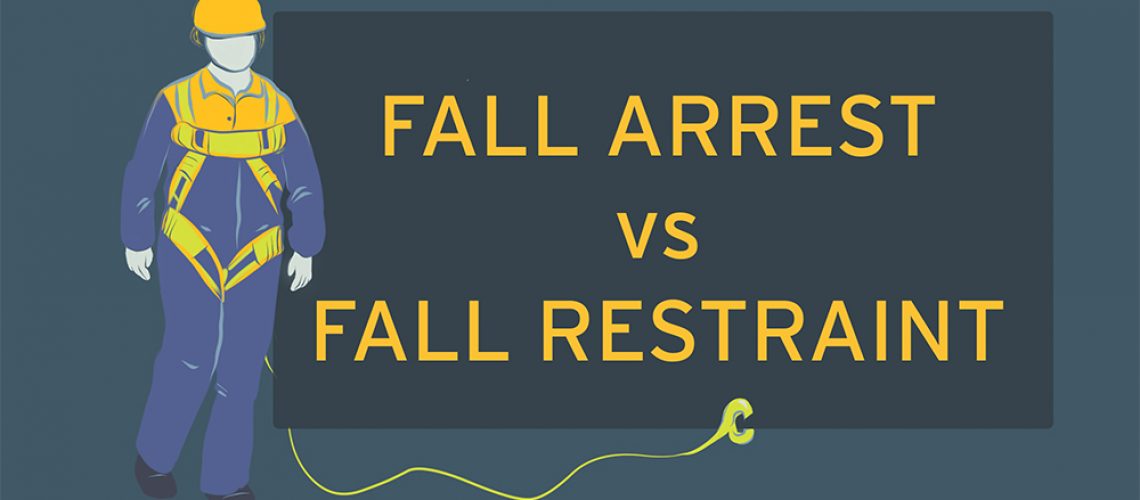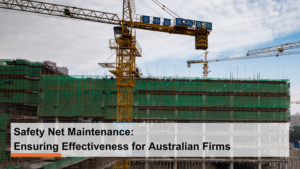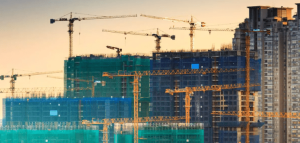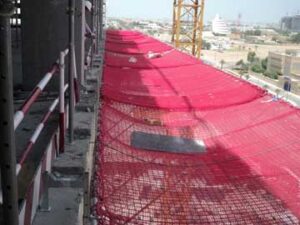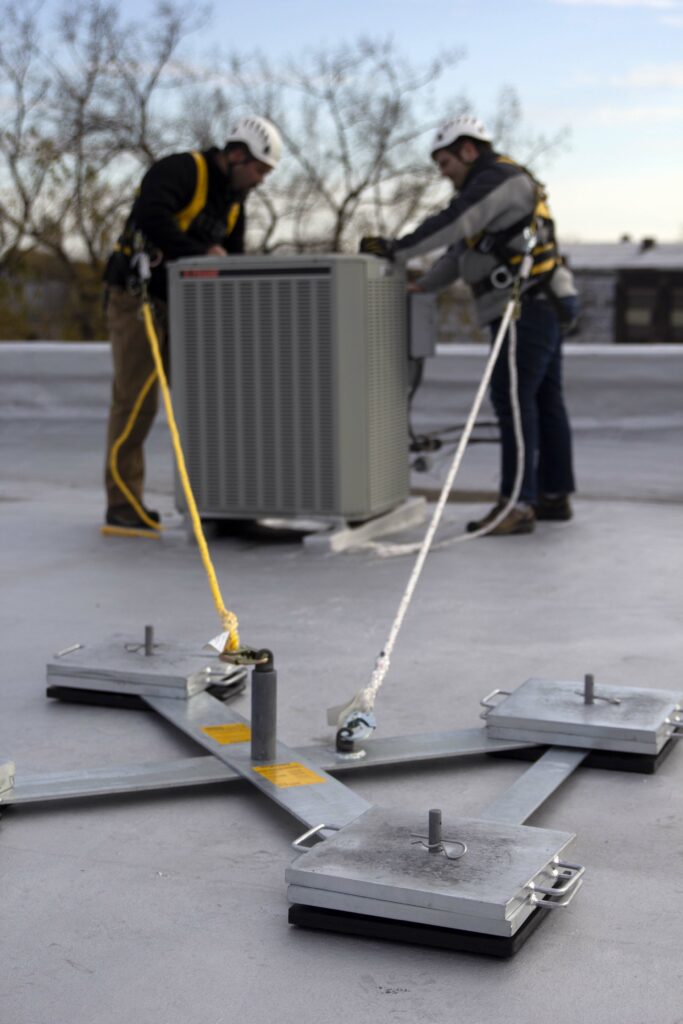
and which is the right safety protection for you?
If you’re in the construction industry, you know how important it is to use the right safety equipment for any job. With workplace accidental falls being one of the leading causes of death and injury to workers. But do you know the difference between fall arrest and fall restraint? In this blog post, we’ll explain everything you need to know about these two safety systems and how they can help keep your workers safe.
Fall arrest and fall restraint systems are two common solutions used to protect workers from falling in hazardous work environments. A fall arrest system is designed to stop a person in the process of a fall, while a fall restraint system prevents someone from reaching the edge of an area where they could potentially become injured.
Fall arrest systems usually consist of safety harnesses, lanyards, and anchorage points that are connected to a secure point on the building or structure. In the event that a person falls, the lanyard will lock onto the anchorage point and stop them before they reach the ground.
In contrast, a fall restraint system works by providing a lanyard attached via an anchorage point to a body harness that is worn by workers when working near the edges. The equipment is designed to limit how far away from an edge someone can travel, as it will restrict their movements if they get too close to an edge or drop zone. This form of protection must be used when guardrails or gates cannot prevent people from falling and should be combined with other safety measures such as job-site inspections and safety training.
Both types of protective systems provide important benefits in terms of protecting workers’ lives.
What is Fall Arrest?
Fall Arrest is a type of safety system that is designed to protect people from falling. It involves the use of specialized equipment like harnesses and lanyards that are attached to anchors or other secure points, ensuring that if a person falls they will be caught before they hit the ground. The roof anchor point system along with the restraint lanyard is designed to mitigate the consequences of a fall by catching the person before the free fall distance is too great. This is often referred to as a personal fall arrest system. The other tool here is the use of safety nets. Safety nets are another type of fall arrest safety system, the types of nets can be fan nets, overhead debris nets, barrier nets, skylight and manhole netting, walk-on nets and pallet rack netting. Fall Arrest systems are typically used in high-risk working environments such as construction sites and industrial plants, where there is a greater chance of falling from heights. They provide essential protection for workers and ensure their safety on the job. Additionally, Fall Arrest systems can also help to reduce the risk of injury due to falls by providing an extra layer of protection should an accident occur.
At Fall Arrest Safety Nets we can provide training for your team about the most effective way to utilise safety nets on the work site.
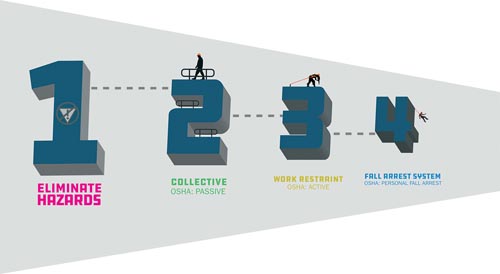
Source: www.safetyandhealthmagazine.com
What is Fall Restraint?
Fall restraint and fall arrest systems are two important elements of a comprehensive workplace safety program and fall prevention systems. Fall restraint systems are designed to prevent workers from reaching the edge of a hazardous area, while fall arrest systems are designed to stop a person after they have already fallen.
Fall restraint systems typically use lanyards and other equipment that restrict movement in order to keep workers away from the edge. This type of system is ideal for areas with steep edges or heights, such as roofs and balconies. The lanyard length is usually fixed and it may also be attached to an anchor point or guardrail to provide further protection.
Fall arrest systems, on the other hand, use equipment like harnesses and ropes that allow workers to move around freely but are designed to stop them from hitting the ground if they do happen to fall. The harness should be attached securely at all times in order for it to be effective. These types of systems are used mostly in situations where there isn’t a ledge or railing available for protection, such as when working at height on construction sites.
Both fall restraint and fall arrest systems play an important role in keeping workers safe when working at height or near sharp edges or the roof edge.
Advantages of Fall Arrest
Fall arrest systems are designed to protect workers from serious injury or death if they were to fall. The system works by stopping the worker in the process of a fall and absorbing some of the energy created by the fall. This helps to reduce the risk of serious injury or death.
The standard fall arrest system includes an anchor point, a safety lanyard or self-retracting lifeline, and a harness. The anchor point should be securely attached to a structural part of the building, while the lanyard should be worn by the worker in order to keep them connected to the anchor point at all times when working at height. The harness should then be worn around their body so that in the event of a fall, it will act as a shock absorber and help to distribute some of their weight and provide extra support.
Netting.com.au is in conjunction with Fall Arrest Safety Nets the leader in supplying industry fall arrest nets.
The main advantage of using a fall arrest system is that it allows unrestricted movement while working at height where there is a risk of falling. It also stops any falls from occurring before they can cause serious harm or death, providing peace of mind for both employees and employers alike. In addition, if there is an accident on site that involves someone falling from a height, then having this type of system in place may provide evidence for insurance companies.
Disadvantages of Fall Arrest
Fall arrest systems are designed to protect workers from the risk of a fall from a great height and the potentially severe injuries or even death that could result. However, there are certain disadvantages of using a fall arrest system, especially when compared to the alternative of using a fall restraint system.
One disadvantage is that with a fall arrest system, you do not have unrestricted movement for the worker where there is a fall hazard present; instead, they must be attached to an anchor point or lifeline at all times. This can be restrictive and uncomfortable, as well as lead to fatigue if they need to work in this way for long periods of time.
Also, since an arrest system stops the workers once they have already begun falling it does not prevent them from accessing any potential hazards in the first place. Therefore it is often recommended that employers employ both systems together so that workers are protected against falls while also being prevented from reaching any possible hazards in the first place.
Finally, although an arrest system will stop someone who has already begun falling it will not necessarily eliminate any injury sustained in a fall due to its sudden stop mechanism; whereas with restraint equipment it is more likely that no injuries will occur due to its prevention method and fall restraint device.
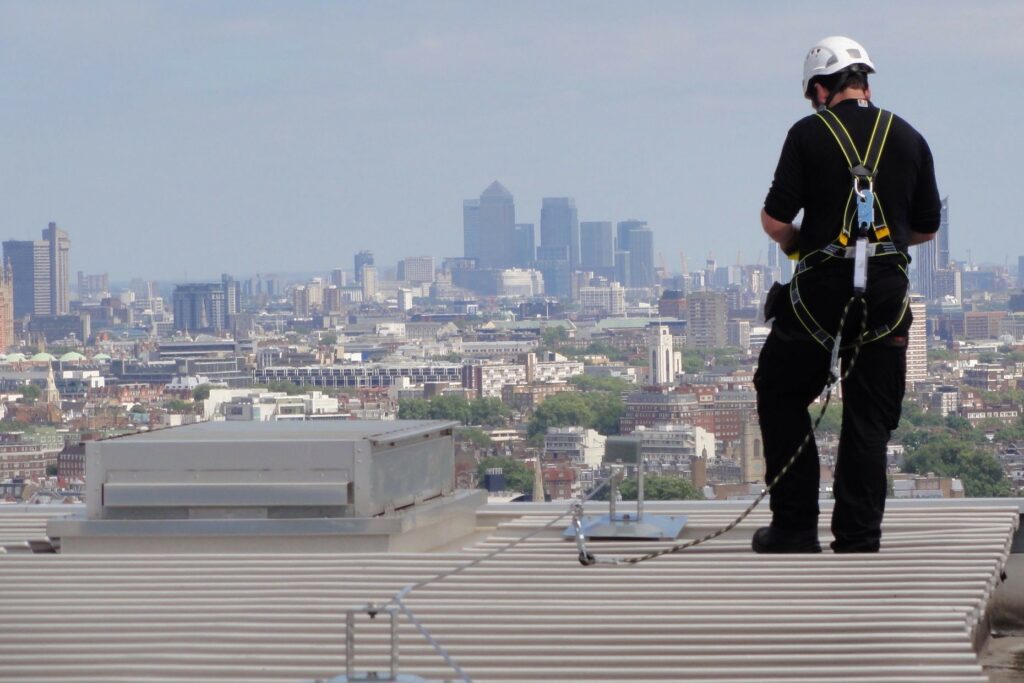
Source: sbc-content.s3.amazonaws.com
Advantages of a Fall Restraint System
Fall restraint systems offer a number of advantages over fall arrest systems. One advantage is that they are designed to prevent the user from ever reaching an unprotected side or edge before they can fall. This reduces the risk of injury significantly because it eliminates the need for a system to stop a user in mid-fall. Fall restraint systems also require fewer components than a full fall arrest system, and are easier to install and maintain, making them more cost effective. Additionally, these systems are simpler for workers to understand how to use properly. All these advantages make fall restraint systems an ideal choice for many workplace safety applications.
Disadvantages of a Fall Restraint System
Fall restraint systems are an important part of any safety protocol when working at heights. They help prevent falls from occurring by limiting an individual’s access to a fall hazard. Unlike fall arrest systems, which catch the person in the process of falling, fall restraint systems use anchors, lanyards and harnesses to keep people away from potential danger.
One advantage of using a fall restraint system is that it allows unrestricted movement while working near a hazard. This is useful for tasks that require frequent movement or changes in position. Additionally, since the person won’t be subjected to sudden stops during a fall arrest, there is less risk of injury or death due to shock loading. Fall restraint systems also make it easier for rescue operations if needed.
The main disadvantage to using a fall restraint system is that it does not provide as much protection as a full-fledged fall arrest system. If the worker slips or trips over something and still ends up falling off the edge, they will not be caught by any kind of safety equipment and can suffer serious injury or death due to the long drop they face below them. In addition, if someone attempts to climb up instead of using proper safety equipment like ladders or scaffolding.
Selecting the Right Equipment for Your Needs
Fall arrest and fall restraint systems are two of the most important pieces of safety equipment used in many industries. Both systems are designed to protect workers from potential falls and ensure their safety. However, there is a key difference between fall arrest and fall restraint that you need to be aware of before selecting the right system for your needs.
First, it’s important to understand what each system does. A fall arrest system is designed to stop a person after they have begun falling, whereas a fall restraint system is designed to prevent them from reaching a hazard in the first place by limiting their movement with an anchor or static line. Fall arrest systems typically include an anchor point or series of points, a lanyard or self-retracting lifeline, and a harness while fall restraint systems typically consist of single-point anchors and horizontal lifelines that can be used to tie off an area or person.
When selecting the right system for your needs, it’s important to consider user competency and training as well as any potential hazards that could exist in your workplace. For general industry applications, guardrails are often sufficient but when there is an increased risk for falls then either a fall arrest system or restaint device must be used.
Types of Harness and Lanyards
Fall arrest and fall restraint systems are essential safety measures designed to protect workers from falls. Both types of systems involve connecting a worker to an anchor point with a body harness and lanyard. The main difference between the two is that fall arrest equipment is designed to stop a fall that has already begun, while fall restraint equipment is used to prevent a worker from ever reaching the point of hazard.
A full body harness is connected to either a single or double lanyard using an energy absorber. Fall arrest lanyards come in various types such as shock-absorbing, retractable, self-retracting lifeline (SRL) and adjustable shock-absorbing lanyards. These systems also utilise roof anchor points, lanyards, rope lines and pole straps for personal fall arrest setup.
It’s important for employers and workers alike to understand the differences between fall arrest and fall restraint systems in order to ensure proper prevention of falls on site. With the right combination of equipment, employers can ensure maximum safety for their employees while they work at height.
Anchor Points and Retrieval Systems
Fall arrest and fall restraint systems provide safety for workers at risk of falling from an elevated height. The main difference between the two systems is that fall arrest equipment stops a person who has already fallen, while fall restraint equipment prevents them from falling in the first place.
Anchor points are essential components of both fall arrest and fall restraint systems. They provide a secure connection point for connecting a lanyard, rope, or other type of restraining device to the structure or surface where work is being done. Permanent anchor points are typically made out of metal and can be installed directly into walls, ceilings or other structural components. Temporary anchor points are often made out of materials such as aluminum or steel and can be attached to surfaces with screws, bolts, clamps or other fastening methods – depending on the system’s requirements.
Flexible line fall arrest systems use a flexible cable that is connected between two anchor points and allows workers to move freely along it while still being protected by their lanyard-style personal protective equipment (PPE). This type of system is commonly used in construction sites where changes in elevation occur frequently throughout the worksite.
Maintenance Guidelines
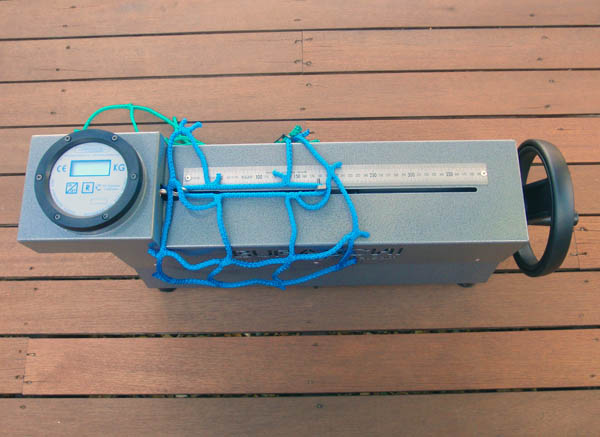
Fall Arrest and Fall Restraint systems are essential components of industrial safety protocols. Both systems are designed to protect workers from falling and sustaining injuries. Fall Arrest systems rely on body harnesses and lanyards connected to an anchor point that stops a person who has fallen, while Fall Restraint systems use tie-off points to prevent a person from accessing a fall hazard.
To ensure the safety of your employees, it is important to maintain both Fall Arrest and Fall Restraint systems according to Australian Standards (AS) 1891.4:2007. This standard outlines guidelines for the selection, use and maintenance of these systems as well as repair instructions for any damaged equipment.
When selecting a system, you should consider the intended use, user size, environment (indoor or outdoor), distance between the user’s working area and the ground or other surfaces below them as well as local laws and regulations. All body harnesses must be labeled with the manufacturer’s information including its weight rating in order for it to be accepted by AS1891.4:2007 standards.
It is also important that you regularly inspect all components of your system including body harnesses, lanyards/connectors/anchor points for wear and tear. At Fall Arrest Safety Nets we can test your safety nets for structural integrity, and can make net repairs, giving you peace of mind that you are providing a safe work environment.
Inspections and Record Keeping

Fall Arrest and Fall Restraint systems are two critical components of any safety program dealing with heights when it comes to protecting workers. Both systems provide a layer of protection against falls, however they operate in different ways.
Fall Arrest Systems are designed to catch a person in the event of a fall, while Fall Restraint Systems work by preventing someone from falling in the first place. It is important to inspect and maintain both types of systems regularly to ensure they are working properly and provide adequate protection.
For Fall Arrest Systems, compliance testing should be conducted at least once every 12 months to check for wear and tear on harnesses, lanyards, anchors, and other components. Inspections should also be done before each use to make sure everything is in good condition and that all parts fit securely. Records should be kept for all inspections as well as any repairs or replacements that were made.
For Fall Restraint Systems, edge protection such as guard rails or safety nets should be inspected regularly for signs of damage or wear-and-tear due to weather or use. Additionally, anchor points should be checked periodically for proper installation and secure attachment of lanyards or track systems used with these devices.
Conclusion
Fall arrest and fall restraint systems are both essential safety measures for workers who are exposed to the risk of falling from height. A fall arrest system is designed to stop a person in mid-fall, while a fall restraint system prevents someone from reaching the edge of a surface where they could fall.
Fall arrest systems include body support, connectors, anchors, and rescue devices that can be used to ensure the safety of workers on elevated surfaces. In many cases, guardrails or covers for holes can provide an effective barrier against falls and should be considered as a primary means of protection. If these measures are not suitable or practical, personal protective equipment (PPE) such as harnesses can be used in conjunction with an appropriate anchor point to provide an effective solution for arresting falls.
For situations where prevention is not possible or practical, fall arrest systems should be implemented as the final measure of control. It is important that all personnel understand how to use this type of equipment properly and receive adequate instruction about how it works at all times. Additionally, all components must meet industry standards and must be inspected regularly in order to guarantee proper functioning when needed.
Contact David at Fall Arrest Safety Nets to discuss all of your safety netting requirements, he can help you to design exactly what you need.

